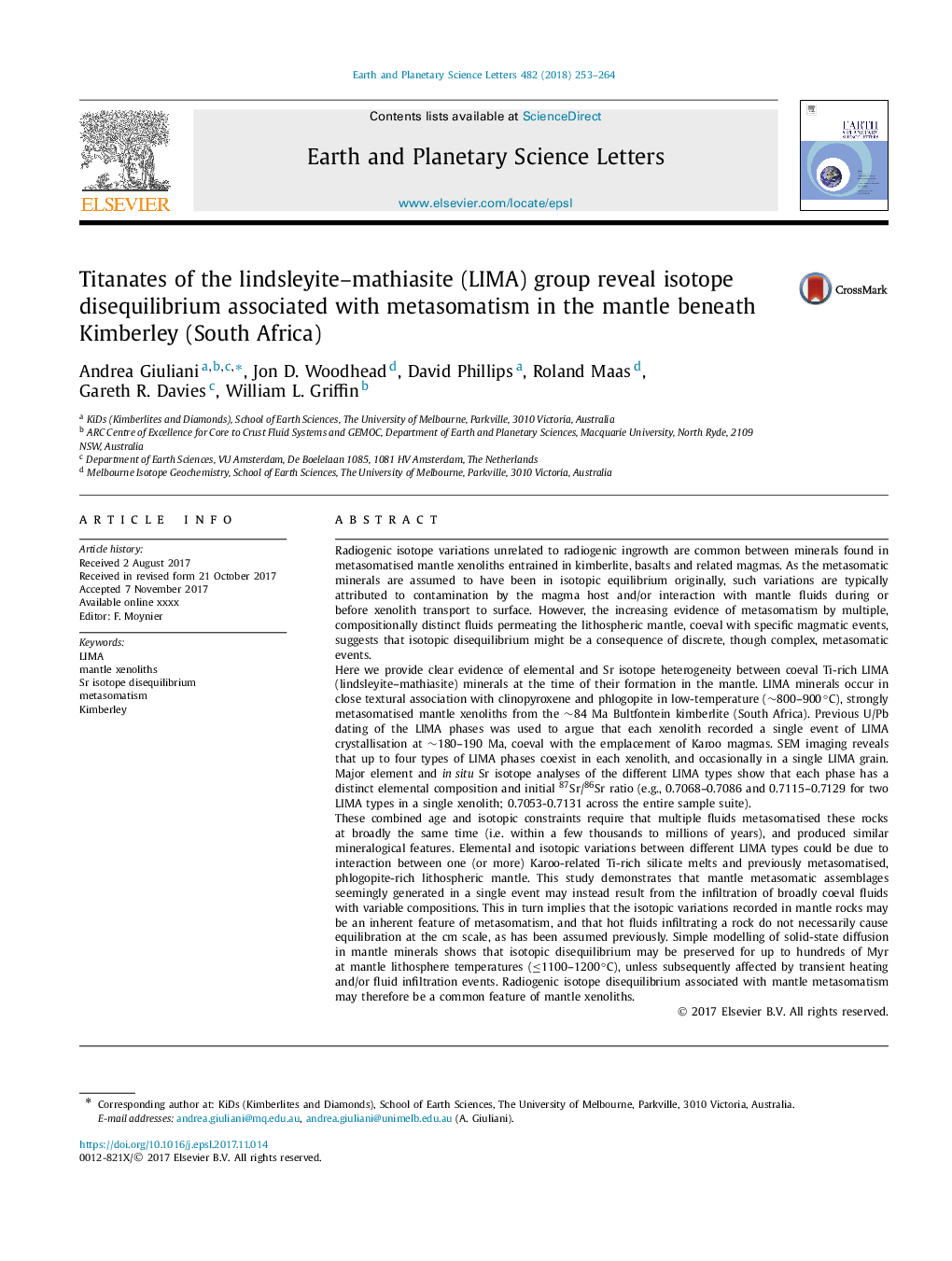| Article ID | Journal | Published Year | Pages | File Type |
|---|---|---|---|---|
| 8907248 | Earth and Planetary Science Letters | 2018 | 12 Pages |
Abstract
These combined age and isotopic constraints require that multiple fluids metasomatised these rocks at broadly the same time (i.e. within a few thousands to millions of years), and produced similar mineralogical features. Elemental and isotopic variations between different LIMA types could be due to interaction between one (or more) Karoo-related Ti-rich silicate melts and previously metasomatised, phlogopite-rich lithospheric mantle. This study demonstrates that mantle metasomatic assemblages seemingly generated in a single event may instead result from the infiltration of broadly coeval fluids with variable compositions. This in turn implies that the isotopic variations recorded in mantle rocks may be an inherent feature of metasomatism, and that hot fluids infiltrating a rock do not necessarily cause equilibration at the cm scale, as has been assumed previously. Simple modelling of solid-state diffusion in mantle minerals shows that isotopic disequilibrium may be preserved for up to hundreds of Myr at mantle lithosphere temperatures (â¤1100-1200â°C), unless subsequently affected by transient heating and/or fluid infiltration events. Radiogenic isotope disequilibrium associated with mantle metasomatism may therefore be a common feature of mantle xenoliths.
Related Topics
Physical Sciences and Engineering
Earth and Planetary Sciences
Earth and Planetary Sciences (General)
Authors
Andrea Giuliani, Jon D. Woodhead, David Phillips, Roland Maas, Gareth R. Davies, William L. Griffin,
